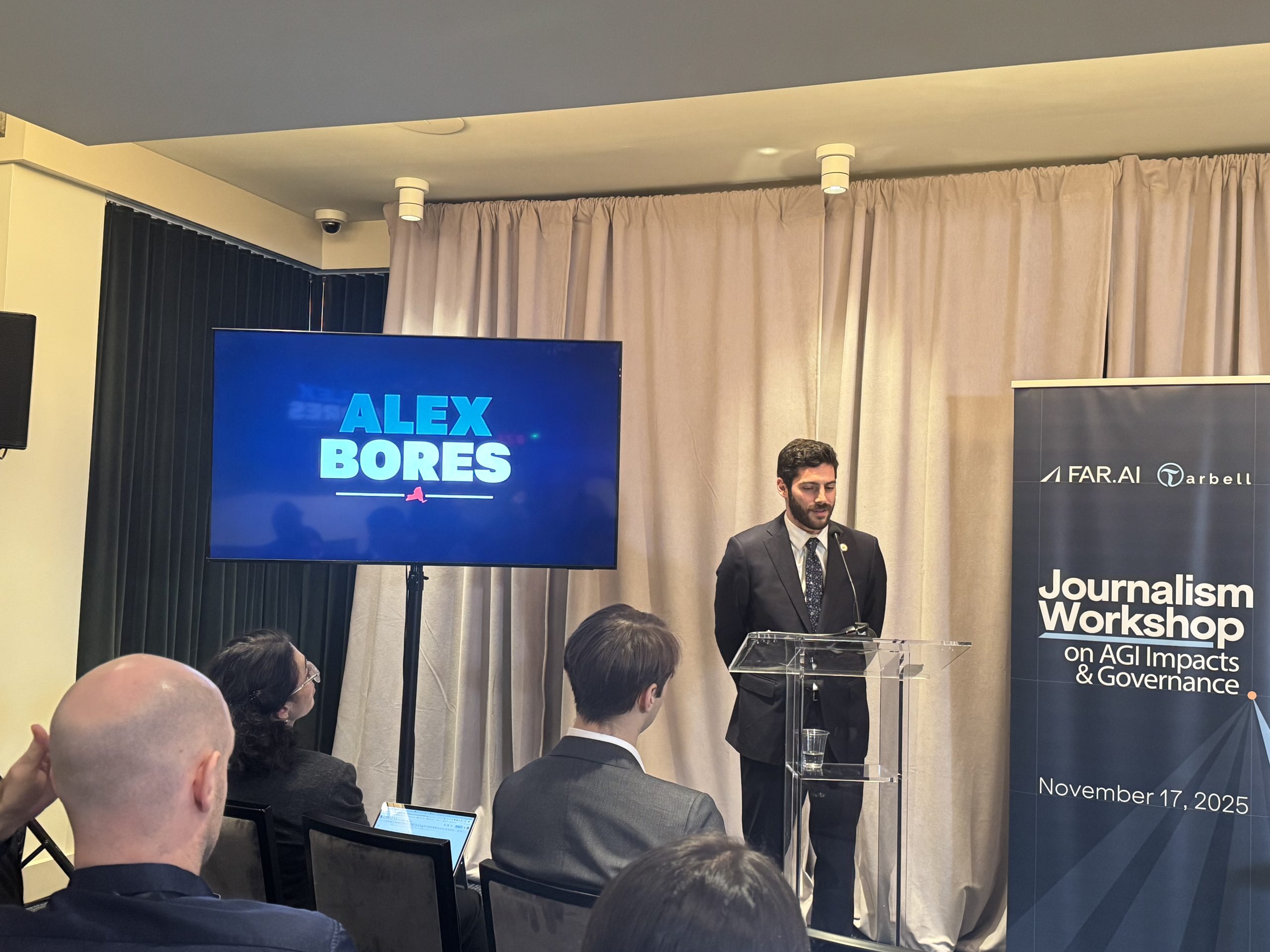
In a significant escalation of the burgeoning debate surrounding artificial intelligence governance, a powerful Super Political Action Committee (PAC) known as "Leading the Future" has directly targeted New York Assembly member Alex Bores. The organization, which boasts substantial financial backing from influential figures within the tech industry, including venture capital giant Andreessen Horowitz (a16z) and OpenAI President Greg Brockman, has identified Bores and his ongoing congressional campaign as its initial focus. This direct confrontation highlights a growing chasm between state-level legislative efforts to establish robust guardrails for AI development and a segment of the tech sector advocating for minimal regulatory intervention, preferably within a unified national framework.
Leading the Future, formally established in August with an ambitious commitment exceeding $100 million, articulates a mission to champion policymakers who favor a "light-touch" or entirely "no-touch" regulatory stance on AI. This core principle inherently positions the PAC against legislators like Bores, who are actively pursuing more stringent oversight mechanisms. Beyond Andreessen Horowitz and Brockman, the Super PAC draws significant support from other prominent tech leaders, such as Palantir co-founder and 8VC managing partner Joe Lonsdale, and the AI search engine company Perplexity. The formation of such a heavily funded entity signals a strategic shift within Silicon Valley towards more aggressive political engagement aimed at shaping the future regulatory landscape for artificial intelligence.
The Legislator’s Unwavering Stance: "Bring It On"
Assembly member Bores, currently campaigning to represent New York’s 12th Congressional District, has openly embraced the formidable challenge presented by the well-funded PAC. During a recent address to journalists at a Journalism Workshop on AGI impacts and governance in Washington, D.C., Bores remarked on the PAC’s directness. He indicated that when the PAC publicly declares its intention to spend millions against him for advocating "basic guardrails on AI," he views this as crucial information to share directly with his constituents. This resolute stance underscores his readiness to transform the PAC’s opposition into a powerful rallying point for his campaign, framing the conflict as a defense of public interest against powerful corporate influence.
Bores articulates a profound connection between the necessity of AI regulation and the tangible concerns voiced by the New Yorkers he serves. His constituents, he explains, frequently express anxieties spanning a wide spectrum of issues. These include the localized impacts of energy-intensive data centers driving up utility costs and exacerbating climate change, the broader societal implications of advanced chatbots on children’s mental well-being and development, and the transformative, often disruptive, effects of automation on the employment landscape. These grassroots concerns, Bores maintains, form the fundamental bedrock of his legislative philosophy, emphasizing a proactive approach to potential societal disruptions caused by rapidly advancing technology.
New York’s RAISE Act: A Pioneering State Effort
At the core of this contention lies New York’s bipartisan Responsible AI Safety and Enforcement (RAISE) Act, for which Bores serves as the chief sponsor. This landmark legislation, currently awaiting Governor Kathy Hochul’s signature, represents one of the most comprehensive state-level attempts to regulate advanced AI systems within the United States. The RAISE Act mandates that large AI laboratories develop and rigorously adhere to robust safety plans specifically designed to prevent "critical harms." These harms could encompass a range of severe negative outcomes, from algorithmic bias leading to discrimination in critical sectors like housing or employment, to the failure of AI systems in safety-critical applications such as autonomous vehicles or medical diagnostics, or even the proliferation of sophisticated deepfakes and misinformation at scale. The bill further requires these entities to disclose significant safety incidents, such as instances of malicious actors compromising an AI model or unexpected emergent behaviors that pose substantial risks. Crucially, the legislation prohibits the release of AI models that pose an "unreasonable risk of critical harm" and stipulates substantial civil penalties, potentially reaching $30 million, for companies failing to meet these established standards.
The development of the RAISE Act involved extensive engagement with major AI firms, including industry leaders such as OpenAI and Anthropic. Bores confirmed that these negotiations led to the modification or removal of certain provisions, notably the initial requirement for independent third-party safety audits, which industry stakeholders reportedly opposed as overly burdensome or proprietary. Despite these concessions aimed at fostering industry cooperation, the proposed legislation and Bores himself have evidently drawn the intense disapproval of significant factions within Silicon Valley, signaling a fundamental disagreement over the appropriate level and nature of government oversight.
The Tech Industry’s Counter-Offensive
Zac Moffatt and Josh Vlasto, the leaders behind Leading the Future, have publicly declared their intent to invest a "multibillion-dollar effort" to undermine Bores’ campaign, as reported by Politico. Their statements to media outlets accuse Bores of promoting "ideological and politically motivated legislation" that, in their view, would severely "handcuff not only New York’s, but the entire country’s ability to lead on AI jobs and innovation." This rhetoric underscores the tech industry’s deep-seated concern that stringent regulation could impede the rapid pace of technological development crucial for maintaining global leadership.
The PAC’s leadership contends that bills like the RAISE Act pose a direct threat to American competitiveness on the global stage, impede economic growth by creating prohibitive compliance costs, leave users vulnerable to foreign influence and manipulation through less secure or regulated foreign AI, and ultimately compromise national security by slowing domestic AI advancements. They argue that the RAISE Act exemplifies a "patchwork, uninformed, and bureaucratic" approach to state-level regulation that would inevitably slow American progress and cede leadership in the global AI race to nations like China, which are heavily investing in AI with fewer perceived regulatory constraints. Instead, Moffatt and Vlasto advocate for a "clear and consistent national regulatory framework" for AI, one that they believe would simultaneously bolster the economy, create jobs, support vibrant communities, and protect users more effectively by providing a uniform playing field for innovation.
The Broader Landscape: State vs. Federal Authority
This clash in New York is not an isolated incident but rather a microcosm of a larger, ongoing national debate concerning AI governance. Many in the tech industry, and their political allies, have consistently lobbied for federal preemption, seeking to prevent individual states from enacting their own AI-related regulations. The argument often put forth is that a fragmented regulatory landscape, where each state creates its own distinct rules, would create an impossible compliance burden for companies operating nationwide, stifling innovation and making the U.S. less competitive globally. Earlier attempts to achieve federal preemption saw a provision aimed at blocking state AI laws temporarily inserted into a federal budget bill, though it was subsequently removed due to strong opposition. However, the push persists, with lawmakers like Senator Ted Cruz actively exploring alternative legislative avenues to achieve federal preemption, often through proposals that would establish a limited federal framework while overriding state initiatives.
Assembly member Bores voices significant concern that such a movement could gain traction at a critical juncture when the federal government has yet to pass any substantive, comprehensive AI regulation. He posits that states, much like startups in the business world, possess the agility and proximity to their constituents to function as "policy laboratories," rapidly testing and refining what regulatory approaches are effective in addressing local concerns and emerging issues. Bores challenges the notion that states should "get out of the way" if Congress has not yet demonstrated the capacity to "solve the problem" of AI regulation itself. He finds it illogical and counterproductive for federal authorities to prevent states from acting to protect their citizens while simultaneously failing to provide a comprehensive, effective federal solution. This dynamic highlights a fundamental tension in American federalism, particularly when confronting novel technologies with rapid development cycles.
Global Context and the Quest for Harmonization
The debate over AI regulation extends far beyond national borders, with significant developments in other major economies influencing global discussions. The European Union, for instance, has advanced the comprehensive EU AI Act, a pioneering legislative framework that categorizes AI systems by their risk level (from minimal to unacceptable) and imposes corresponding obligations on developers and deployers. This global precedent highlights the growing international consensus on the necessity of AI governance, even as specific regulatory approaches and philosophies diverge. The EU’s "precautionary principle" often contrasts with the "innovation-first" approach often advocated in the U.S., creating complexities for multinational tech companies.
Bores has indicated that he is actively collaborating with policymakers in other states, seeking to standardize legislative efforts and thereby address the "patchwork" objection raised by Silicon Valley. Such interstate cooperation could lead to more uniform state-level regulations, mitigating some of the compliance challenges for businesses. He also emphasizes the importance of ensuring that any U.S. legislation, whether state or federal, avoids unnecessary redundancy with the EU AI Act, recognizing the interconnectedness of the global tech landscape and the need for international interoperability where possible. Harmonization efforts, both domestically and internationally, could prove crucial in navigating the complexities of global AI development and deployment, preventing regulatory arbitrage and fostering shared standards for ethical and safe AI.
Defining Trustworthy AI: Innovation’s Foundation
Bores emphatically rejects the idea that AI regulation inherently stifles innovation. He asserts that he has, in fact, declined to support bills he believed would have unintended negative consequences for the industry, demonstrating a nuanced approach. Instead, he views the establishment of "basic rules of the road," whether literal or metaphorical, as fundamentally "pro-innovation." This perspective aligns with a growing body of expert opinion suggesting that clear, predictable regulatory frameworks can actually foster innovation by creating a stable environment, reducing uncertainty, and building public trust, which is essential for widespread adoption.
His core belief is that the AI systems that ultimately achieve widespread adoption and long-term success will be those deemed "trustworthy." He observes a growing public rejection of the industry’s position that government has no legitimate role in fostering this trust. From this perspective, regulation, when thoughtfully crafted, serves not as a barrier but as a foundational element for sustainable and ethical technological advancement. Without a framework for trust, Bores implies, public adoption and long-term societal benefit of AI may be curtailed by widespread skepticism, fear, or a series of high-profile failures that erode confidence.
Societal Ripples: Beyond the Legislative Halls
The implications of this regulatory standoff extend far beyond the political arena, touching nearly every facet of society. Economically, the balance between fostering rapid innovation and ensuring responsible development could dictate the future of job creation, industry competitiveness, and the equitable distribution of economic benefits arising from AI. Culturally, the public’s trust in AI systems, their willingness to integrate AI into daily life, and the ethical norms governing its use are all profoundly at stake. From the potential for sophisticated AI to exacerbate mental health challenges among youth through pervasive, personalized content, to the significant environmental footprint of energy-intensive data centers powering these systems, the concerns are tangible and immediate for many communities. The debate also encompasses critical issues like algorithmic bias, privacy violations, and the potential for AI to undermine democratic processes through advanced disinformation campaigns.
The Super PAC’s aggressive stance underscores the immense financial and strategic interests at play for tech companies, which envision AI as the next frontier of economic growth and societal transformation. Their desire for unfettered development, driven by the belief that excessive regulation will hinder progress and empower international rivals, contrasts sharply with the public’s increasing demands for accountability, safety, and ethical considerations in the deployment of powerful AI technologies. This fundamental tension between technological acceleration and societal governance is a defining characteristic of the current era.
The Path Forward: A Defining Moment for AI Governance
As the political battle over Alex Bores’ congressional bid and the RAISE Act unfolds, it crystallizes a pivotal moment in the governance of artificial intelligence. The aggressive intervention of a well-funded Super PAC against a state legislator advocating for AI safety measures signals the high stakes involved for both the tech industry and public interest advocates. The outcome of this particular conflict in New York may not only shape the future of AI regulation within the state but could also set precedents for how similar legislative efforts are approached across the nation, potentially influencing the broader trajectory of federal policy.
The fundamental question remains: Who will ultimately define the future trajectory of AI—the innovators pushing technological boundaries, the policymakers seeking to ensure societal well-being, or a complex and often contentious interplay of both? This ongoing debate will undoubtedly influence the development, deployment, and public perception of artificial intelligence for decades to come, shaping whether AI becomes a force for broad societal benefit or a source of widespread concern. The engagement of Super PACs like Leading the Future ensures that the conversation will be anything but quiet, making the public discourse surrounding AI governance an increasingly charged and consequential one.





